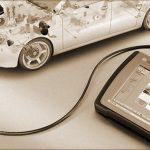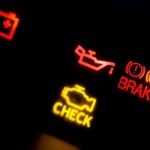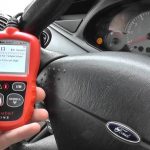
If you’ve ever wondered what OBD-II Diagnostic Trouble Codes mean, you’re in luck. The following article will help you decipher GM codes and learn about the meaning of each. In addition, we’ll talk about the differences between GM codes and OBD-II trouble codes. In the end, you’ll have the information you need to diagnose your car’s problem quickly and accurately.
OBD-II Manufacturer Specific Trouble Codes
The on-board computer diagnostic system stores diagnostic trouble codes for your vehicle when it detects a problem. These codes are stored when a sensor reading falls outside the normal range. The codes are meant to help you and a mechanic pinpoint the exact problem area. A misfire code, for example, will be the same for all vehicles, no matter their make or model. A malfunctioning dashboard indicator light will also display a code.
Most online databases and trouble code lookup tools list these codes as generic or manufacturer specific. This terminology is not necessarily harmful, but is generally only used when referring to non-specific faults. OBD-II is mandatory for all vehicles and all aftermarket scan tools can access these codes. It also requires vehicle manufacturers to implement the system in such a way that all 10 diagnostic modes are available. If you are unsure of what a particular code means, consult your owner’s manual for more information.
OBD-II Manufacturer Specific Trouble Code Definitions include a listing of generic and manufacturer-specific codes. The first two digits identify the system, while the third character identifies the specific manufacturer. For example, a code starting with P0 means a problem with the fuel system, while a code ending in a letter is a manufacturer-specific trouble code. To determine what type of code your car has, you can search the manual or use the search function on your car diagnostics software.
OBD-II Diagnostic Trouble Codes
Diagnostic Trouble Codes (DTC) are five-character-long codes generated by the OBD system of modern vehicles. Each of these codes describes a particular malfunction in a vehicle. Its first character indicates the system to which it applies, and the second digit specifies the type of code and manufacturer. The fourth and fifth digits are variable and relate to a specific problem. The purpose of the DTC is to give the driver an indication of the problem that needs to be resolved.
To read an EOBD code, plug in the connector into your vehicle. You should find a diagnostic tool that will plug into the OBD-II connector located under the dashboard. If your vehicle has a non-OBD-II connector, then you’ll need a specialized adapter. Basic code readers typically only provide a five-character DTC. If you’re looking for a more comprehensive solution, you can find a system that will provide complete code definitions, along with fault alerts.
OBD-II Diagnostic Trouble Codes are divided into two categories. The generic category includes codes that are the same for any vehicle model, while the enhanced category includes those that differ from year to year. The difference is in the type of code that the device must look for, as some faults will set a P1 code, while others will only set a P0 code. As a result, a diagnostic tool must be able to read both types of codes to determine the problem.
GM codes
Having trouble understanding the GM codes on your vehicle? There are two main ways to find out what the codes mean and how to fix them. First, know the types of codes you have. OBDII codes are global and manufacturer specific. The latter start at P1XXX. You can’t use a cheapo scan tool to diagnose these codes; these tools only read generic powertrain P codes and don’t read enhanced or body or chassis codes.
OBD1 diagnostic trouble codes are those generated by the OBD1 connector, which is used on older GM vehicles. It is also called the ALDL connector. It is located under the dash, below the steering wheel and can be accessed from the driver’s knee. The OBD system has a standardized configuration, but the codes don’t always pinpoint the problem. It is important to know which connector is responsible for a specific code, and the exact type of diagnostic tools required.
Meaning of OBD-II codes
OBD-II codes are a series of diagnostic trouble codes that your car may display when it experiences various malfunctions. There are two general types of codes: manufacturer-specific and generic. The first type of code, P0, is generic, meaning that it applies to all cars, and the second type, P1, is manufacturer-specific to a specific make and model. The latter two are more specific, with codes beginning with “1” indicating a problem with the vehicle’s powertrain.
Regardless of the type of code, it’s essential to know the meaning of each one. In many cases, the Check Engine Light is a warning sign that something is wrong. If it stays on, then a major malfunction is underway. For some cars, it can even signal a looming breakdown. In this case, a vehicle’s diagnostic system will trigger the Check Engine light, which indicates a potential problem. The purpose of the OBD codes is to tell the mechanic what is wrong with the vehicle, so it can fix the problem.
An OBD-II code is the result of a malfunction in the car’s electronic system. It’s a series of five-letter codes that help a vehicle owner pinpoint the problem. A P0442 code, for example, means there’s a leak in the evaporative emission system. While a P0201 code will tell you that there’s a leak in a circuit for cylinder 1, P0202 means that the cylinder’s injector is out of whack.
Symptoms of OBD-II codes
OBD-II codes are warnings from your vehicle’s computer that tell you something is wrong. These codes are also known as Trouble Codes. If you see more than one OBD-II code on your car, you should start by addressing the top code first. If you have multiple DTCs, you may have a higher problem than you think, and it’s important to diagnose it correctly.
An OBD-II code will tell you something is wrong, but it won’t tell you which part needs to be replaced. In some cases, the problem may be with a completely different system, such as the alternator or transmission. OBD-II codes can make it difficult to diagnose the problem with your car, and some parts stores may make the situation worse by trying to sell you a part based on a code.
The P0171 and P0174 codes indicate an issue with the fuel system. Your car is running too lean, and is receiving too much air instead of fuel. Symptoms of P0171 and P0174 can range from a hesitant engine to disconnected hoses. Fuel pressure and air/fuel ratio problems can also be the cause. For more information, see What Causes Your Car to Show P0171 and P0174 Codes
Symptoms of P0049 code
If you notice that the engine performance of your car is declining, your vehicle may be suffering from the problem known as the P0049 error. It can be caused by many factors, including a vacuum leak, a dirty sensor, or an exhaust gas recirculation valve that does not close properly. In addition, excessive air inflow may be caused by dirty fuel injectors, a weak fuel pump, or a leaky fuel pressure regulator. A lean fuel mix error may cause your vehicle to idle rough, have misfires, or experience a hesitation during acceleration. This error can be difficult to diagnose, so here are some diagnostic steps to help you determine the source of the problem.
First, check the diagnostic trouble code. If it is set to “A” for turbocharger or supercharger, it means that your engine has overspeeded. These types of engine parts are connected through a belt system and operate through exhaust gases, and if they are not working properly, your car will fail emissions tests. If you notice any of these symptoms, you should contact a service professional to determine what needs to be done.
Another possible cause of the P0049 error code is the fuel cap. The fuel cap may have fallen off, and replacing it will solve the issue. Another common cause is the EVAP system hose. This hose transports the vapor from the fuel to the intake manifold. If it is leaking fuel, a hole or tear in the hose could cause the code. If you replace the gas cap, the code will disappear.






